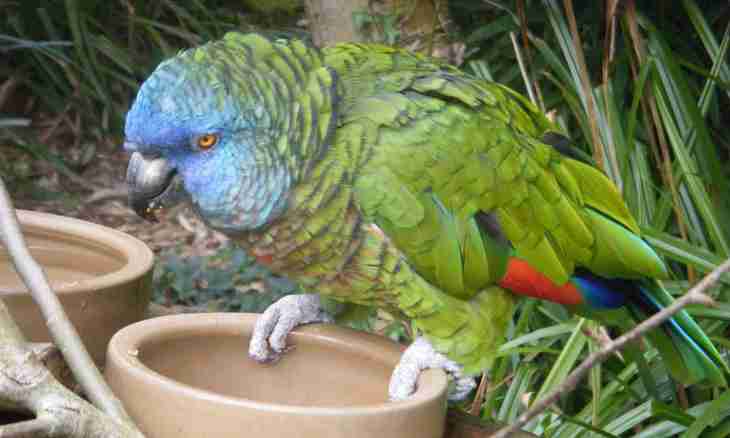Today on the earth there are about 300 species of parrots. All of them are very different and everyone is in own way interesting. The special attention is drawn to themselves by their largest representatives. The big parrot on the weight and length of a body can be considered kakapo. This rare species on the verge of extinction therefore it is included in the Red List.
Bright multi-colored plumage, unusual habits, ability to copy the human speech attract to themselves attention therefore parrots became one of the most favourite pets. These are very sociable birds, they perfectly get on with people and do not take out loneliness, are also considered as the cleverest birds living on Earth.
Kakapo is a big owl's parrot
Kakapo's parrots live only in the territory of New Zealand. Body length at the adult representative reaches 60 cm, the bird up to 4 kg can weigh. Life expectancy of this look reaches 95 – 100 years. Color of plumage kakapo chartreuse with black strips on a back, on a muzzle the feathers form a front disk, as at owls. These birds exhale very sharp, but pleasant smell similar to aroma of wild flowers.
Kakapo – the only species of parrots who are not able to fly. Atrophied muscles and insufficiently developed keel allow to use wings only as the glider, going down from a tree top on the earth. These birds lead a nocturnalism. In the afternoon they sit out in holes or in crevices of rocks, and leave for search of food at night. For this purpose kakapo can pass one night prior to several kilometers on already trodden paths. They eat backs, berries, seeds and juice of plants, pollen of flowers, a moss, mushrooms and even small reptiles.
Marriage season kakapo
Favourite delicacy kakapo – tree seeds to Rome. The peak of active reproduction of these birds falls on a year of a plentiful harvest of a tree. There is it time in 2 – 4 years. The marriage season at kakapo lasts 3 – 4 months. During this period the big activity is shown by males. To draw attention of a female, they let out very loud cry similar to croak of a crow. That the sound extended after the district better, they dig small poles in the form of a bowl up to 10 cm in depth and use them as the resonator. Males gather and compete among themselves. Very often there are fights for a female as among individuals of this look the number of males is much higher. During a marriage ritual they lose to a half of the weight.
Having heard an appeal of a male, the female kakapo often should pass up to several kilometers of a way. After simple courtings there is a pairing process. Then the female leaves, and the male continues to tokovat, in hope to attract the new partner.
In 10 days after pairing the female lays eggs. The nest kakapo is equipped under branches of trees, in stubs, holes, crevices of rocks. Cover it dust of trees or feathers. The laying of eggs and hatched posterity is looked after by a female, leaving at the night a nest for search of food.
Posterity kakapo
In a laying often 2 is up to 4 eggs more rare. The period of incubation is 30 days. The hatched baby birds deafs and blind people in a gray down. Feather within 10 – 12 weeks. After several weeks of life of baby birds the female leaves a nest and comes back only for feeding of posterity for 6 months. After an exit from a maternal nest the baby birds keep near it to one-year-old age. Often only one baby bird drives out of a laying. Puberty happens at males by 5 years, at females by 9 years.

